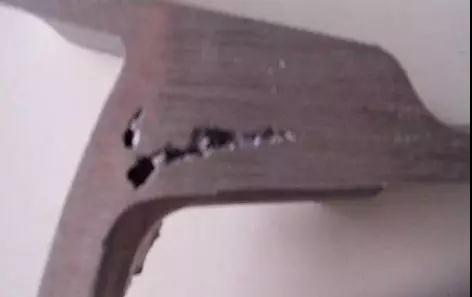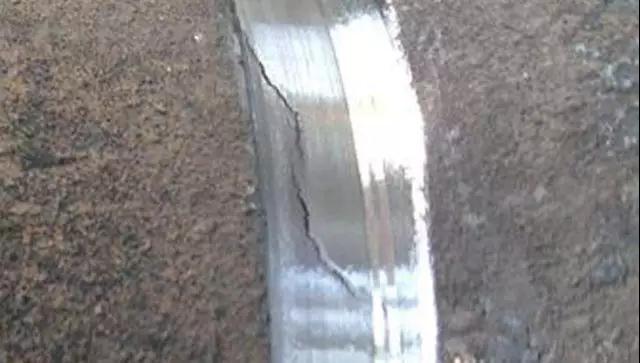Casting mold five kinds of defects and prevention methods!
Release time: 2019-05-29 Source:Luoyang Shun Xiang Machinery Co., Ltd. Visits: 761

Casting mould
The importance of casting is self-evident!
Whether the casting mold is good or bad,
It is directly related to the success or failure of casting.
Therefore,mold defects need special study,
Having mastered the secret of mold defects,
To effectively prevent the production of defects!
Today we will analyze the casting mold
Five common defects and their solutions!
Defect 1:casting shrinkage

The main reasons are casting shrinkage caused by solidification and shrinkage of the alloy and the absorption of a large amount of oxygen and nitrogen in the air when the alloy is dissolved.
Solutions:
1)place the gold storage ball.
2)add the diameter of the casting channel or reduce the length of the casting channel.
3)increase the amount of metal.
4)the following methods are adopted to prevent the organization from appearing sag in the direction of casting channel.
A.Place cooling channels at the root of the casting channel.
B.To prevent the molten metal from hitting the cavity vertically,the casting channel shall be curved.
C.Place the casting channel diagonally.
Defect 2:casting surface rough and not clean

The surface of the cavity is rough and the molten metal has a chemical reaction with the surface of the cavity,which mainly reflects the following conditions.
1)the embedded material particles are coarse and not delicate after stirring.
2)after curing,the embedded material is directly roasted in maofu furnace,with too much moisture.
3)the heating rate of roasting is too fast,resulting in expansion difference at different positions in the cavity,making the inner surface of the cavity flake off.
4)the baking of***over high temperature or roasting time is too long,so that the inner surface of the mold cavity is too dry.
5)the melting temperature of the metal or the roasting temperature of the casting ring is too high,so that the metal reacts with the mold cavity,and the embedded material is burned on the surface of the casting.
6)the roasting of the casting mold is not enough.When the molten metal is cast,the embedded material will decompose,and more gases will occur,resulting in pitting on the surface of the casting.
7)after the molten metal is cast,the local temperature in the mold cavity is too high,resulting in local roughness on the surface of the casting.
Solutions:
A.don't over melt the metal.
B.The roasting temperature of the cast should not be too high.
C.The baking temperature of the cast should not be too low(the baking temperature of the phosphate embedded material is 800-900°c).
D.Avoid the occurrence of sag in the direction of the tissue facing the casting channel.
E.Apply liquid to wax type to prevent burning.
Defect 3:the casting is cracked

There are two major reasons,one is usually because of the metal solidification too quickly,resulting in casting defects(seams);The other is cracking caused by high temperature.
1)for casting joints caused by too fast solidification of metal,the casting time and solidification time can be controlled to solve the problem.Factors related to casting time:wax shape.Quantity of thickness to cast.Casting pressure(casting machine).The air permeability of the embedded material.Factors related to setting time:wax shape.High roasting temperature of cast ring.Type of embedded material.The type of metal.Casting temperature.
2)cracking caused by high temperature is related to the mechanical properties of metal and embedded materials.The following conditions are prone to cracking:high casting temperature is prone to cracking;High-strength embedding materials are prone to cracking;Nickel and cobalt alloys with small extensibility are prone to cracking.
Solutions:
Use low strength embedding material;Minimize the casting temperature of the metal;Do not use malleable ones.A brittle alloy.
Defect 4:spherical projection defect

It is mainly caused by the residual air(bubble)remaining on the waxy surface after mixing of the embedding material.
1)vacuum mixed embedding material,better effect after adopting vacuum embedding.
2)spray surfactant on waxed surface before embedding(e.g.rijin castmate)
3)coating the embedding material on the wax type first.
4)pressure embedding method is adopted to extrude bubbles.
5)pay attention to the direction of the wax mold when embedding,and there should be no depression below the connection between the wax mold and the casting channel.
6)avoid mixing with bubbles when embedding.Cast rings and bases.Buffer paper must be tightly closed;The embedded material should be poured along the inner wall of the casting ring(using a vibrating machine).
7)do not shake after filling the casting ring.
Defect 5:flash defect of casting

The main reason is that the casting ring cracks,molten metal into the cavity crack.
Solutions:
1)change the embedding conditions:use the embedding materials with high intensity.The strength of gypsum embedding materials is lower than that of phosphate embedding materials.Use circle casting whenever possible.When casting without ring,the ring is prone to crack,so it needs to be noted.
2)roasting conditions:do not roast the embedded material directly after curing(it should be roasted several hours later).It should heat up slowly.Cast immediately after roasting,do not repeat baking ring.
